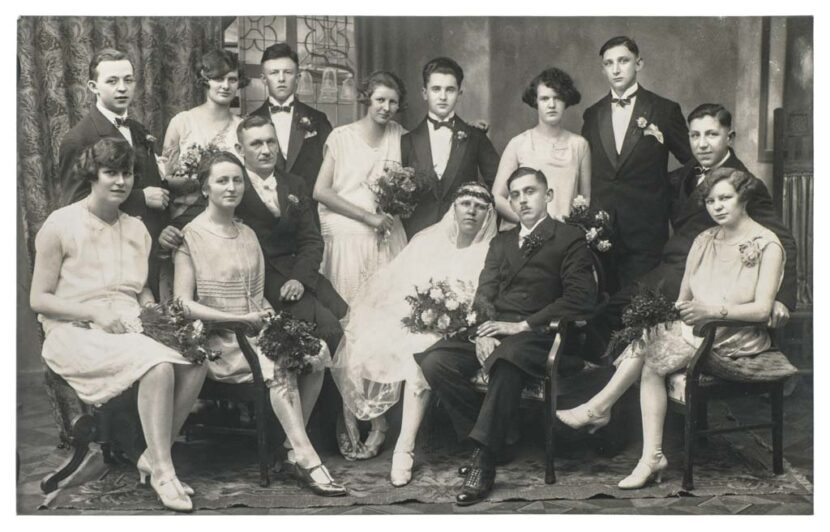The history of wedding photography
Wedding photography has experienced tremendous growth since it was developed around 150 years ago. Beginning with more primitive techniques such as daguerreotypes before eventually evolving into digital advancements – this medium can now beautifully express all the enchanting aspects that surround such love-filled events. Within this article is an investigation into how we arrived at modern-day wedding photographs: from modest origins right through to now being considered indispensable elements on your special day.
The Early Days: Daguerreotypes and Wet Plate Photography
Photography has come a long way since the first invention – the daguerreotype – which dates back to the early 1800s. While attractive for portraitures including weddings at that time it required difficult or extensive processes such as high costs and skilled craftsmanship to produce confident images with detail. By its nature necessitated lengthy exposure times limiting photographers’ ability to capture movement often resulting in static wedding photos featuring posed couples.
However, newer reproduction technologies superseded this Original method with Wet Plate Photography taking over by the Late 19th century. It allowed greater room for creativity, and higher efficiency too with lessened disruptions. Wedding photographers ever since then have enjoyed more flexibility with respect to suitable settings and more emotionally dynamic snapshots allowing them greater scope in producing natural touching photos.
The Turn of the Century: The Emergence of Studio Photography
As we entered the 20th century, wedding photography underwent a notable shift from its conventional style toward one driven by studio setups. Emanating from this change was access to an environment that provided photographers with the ability to produce uniformly high-quality photographs under constant regulation. With weddings becoming increasingly popular, chiefly due to an augmented desire among couples for professionally captured images of their special day, studio photography was adopted widely due to its uncountable advantages.
These benefits ranged from greater command over lighting and image consistency affording professional snappers room for a smorgasbord of photographic techniques necessary for creating visually captivating pictures endowed with timeless significance. Unfortunately, despite these perks, photographs posed in studios were often inflexible and predictable without spontaneous moments cherished for conveying raw human emotion.
The Rise of Candid Wedding Photography
As weddings have evolved over time so has their photography, with candid wedding photography making its appearance in the mid-20th century. This fresh take emphasizes capturing genuine moments and emotions experienced during weddings rather than posed shots taken within a studio environment. Compared to its predecessor, formal studio-based photographs, candid wedding photography soared in popularity amongst couples looking to immortalize natural moments throughout their special day.
Henri Cartier-Bresson is credited for being one of the movement’s pioneers; he’s fondly referred to as “the father of modern photojournalism”. Through his work, he was able to harness true beauty from life’s authentic candor, and today’s contemporary photographers continue to be inspired by his exceptional work ethic.
The Development of the Modern Wedding Photographer
With technological advancement marking our current age today, developments such as digital cameras coupled with photo software used by professional photographers have actively changed what makes up great wedding photos compared with previous years gone by. This innovative development thus means that modern-day photographers need higher technical skills along with versatility in their approach towards being creative; by tweaking images without breaking away from staying true to their work. The resultant effect of capturing superb wedding images is to tell the story, invoking emotions while communicating the uniqueness and affection that lies between a couple in love. Regardless of any environmental challenges due to changing light or location dynamics, it’s essential for photographers to rise up to face such obstacles and deliver stunning photos.
The Digital Age: The Future of Wedding Photography
The emergence of digital technology within photographic spheres towards close end stages in the 20th century wrought major adjustments throughout marriage documenting rituals at large-scale events by using Wedding Photography services. What seemed like a mammoth task earlier became as simple as play thanks due to digital still cameras that perfected effective image quality at economic price points. More prospective brides and grooms themselves had authority which helped make planning done pre-event lessen anxiety levels at cost-effective prices too. Crucially, the consequent wave of young picture makers combined stylish yet natural snaps into niche territory: ‘Wedding Photography’.
Today’s surroundings only foster more creative techniques rooted in personalized deliverance, speedy service not underestimating refinement bound splendid imagery.
The Impact of Social Media on Wedding Photography
Wedding photography as we know it today owes much to social media’s influence over recent years. Platforms like Instagram or Pinterest have enabled effortless image sharing on-site among many viewers, generating greater demand for unique, captivating compositions within wedding photos worldwide. To rise up against these expectations, many photographers have integrated brand-new methods & stylizations into their work through which they deliver daring & creative images that truly exceed expectations. Wedding photography’s journey throughout history exhibits progressions starting from basic chronological recordings and advancing towards impressive works designed eloquently capture each event’s meanings through digital imagery. With the prospects of technological enhancements and social media’s effects ahead, wedding photography is set to continually evolve further comprising innovative styles & designs.
Conclusion
Your wedding day is one of those rare occasions where every moment feels precious – which makes capturing those special memories indispensable. Regardless of whether you’re seeking candid shots or want stunning portraits during your big day, highly-skilled photographers work hard to preserve everything solidified through their lenses by adding an artistic flair to their craft. Capturing candid moments and striking poses can often highlight emotions as they are happening. Thus providing you with pictures that tell your unique story and enabling them to be cherished forever.

No Comments